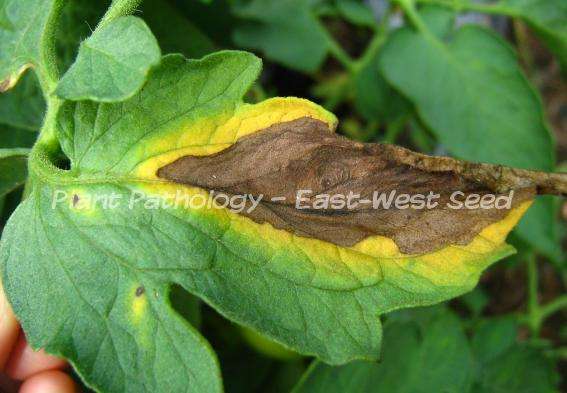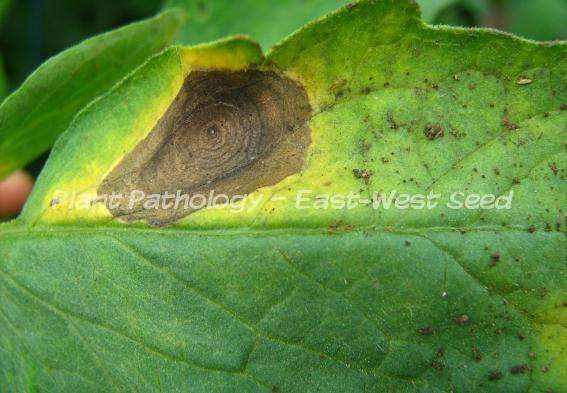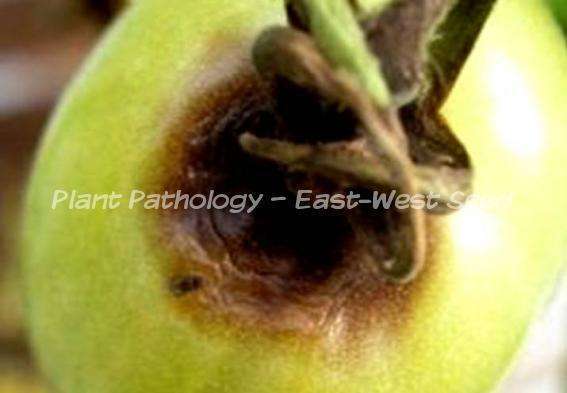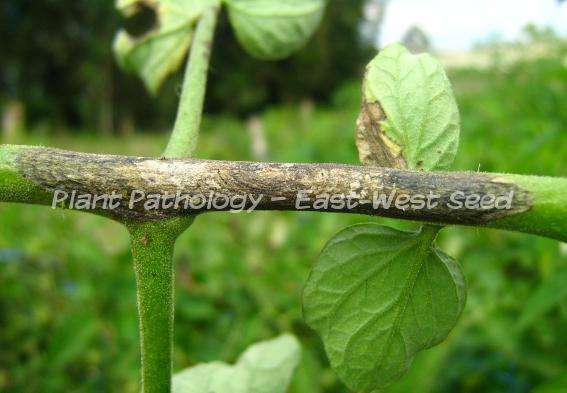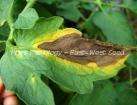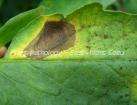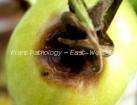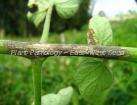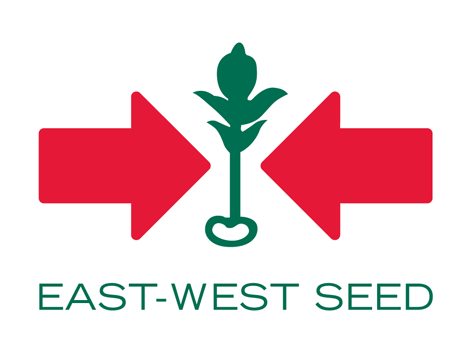Causal Agent:
Fungus (Alternaria solani)
| Characteristic Symptoms: | |
 |
The disease can affect the leaves, stem, flowers, and fruits. |
 |
It is first observed as small, brown spots, often with yellow margins usually on the older leaves. |
 |
The spots eventually enlarge and concentric zonations/rings are observed at the center of the spot. |
 |
Stem lesions are dark brown to black, slightly sunken and elongated spots with pronounced concentric rings. |
 |
Fruit spots occur in the stem end and usually dark brown, leathery, sunken lesions with concentric rings. |
| Conditions for Disease Development: | |
 |
The pathogen overwinters primarily on infected crop debris and can survive in the soil for many years.
|
 |
Warm and humid environments favour infection.
|
 |
Lesions generally appear quickly under warm, moist conditions on older foliage and are usually visible within 5-7 days after infection.
|
 |
Spores are dispersed mainly by wind and occasionally by splashing rain or overhead irrigation.
|
 |
The disease is considered polycyclic with repeating cycles of new infection, thus, it has the potential to spread and build up to damaging levels.
|
| Management and Control: | |
 |
Use pathogen-free seeds and seedlings.
|
 |
Good field sanitation (i.e., removal of heavily affected leaves, infected crop debris) can help reduce inoculum source.
|
 |
Remove weeds and volunteer crops that may serve as alternate hosts of the fungus.
|
 |
Provide good air circulation to minimize periods of leaf wetness.
|
 |
Keep the plants healthy as they become susceptible when under periods of stress.
|
 |
Crop rotation with nonhosts can help reduce buildup of inoculum in the soil.
|
 |
Apply protectant fungicides (mancozeb, chlorothalonil) at weekly intervals when necessary.
|
 |
Use resistant varieties, if available.
|
 |
Apply protectant fungicides such as mancozeb (e.g. Attain M-80Ⓡ, Achem Mancozeb 80 WPⓇ, Micron 80 WOⓇ, VanzebⓇ) or chlorothalonil (e.g. Daconil®, Agronil®, Yoda®, Rover®, Yoda 500Ⓡ) at weekly intervals. |
| References: | |
| Kemmitt, G. 2002. Early blight of potato and tomato. The Plant Health Instructor. DOI: 10.1094/PHI-I-2002-0809-01 (http://www.apsnet.org/edcenter/intropp/lessons/fungi/ascomycetes/Pages/P...) ; Tomato Early Blight (http://www.ext.colostate.edu/mg/gardennotes/718.html) | |
To view other diseases, click here.
Need more help? Ask the Doctor.



